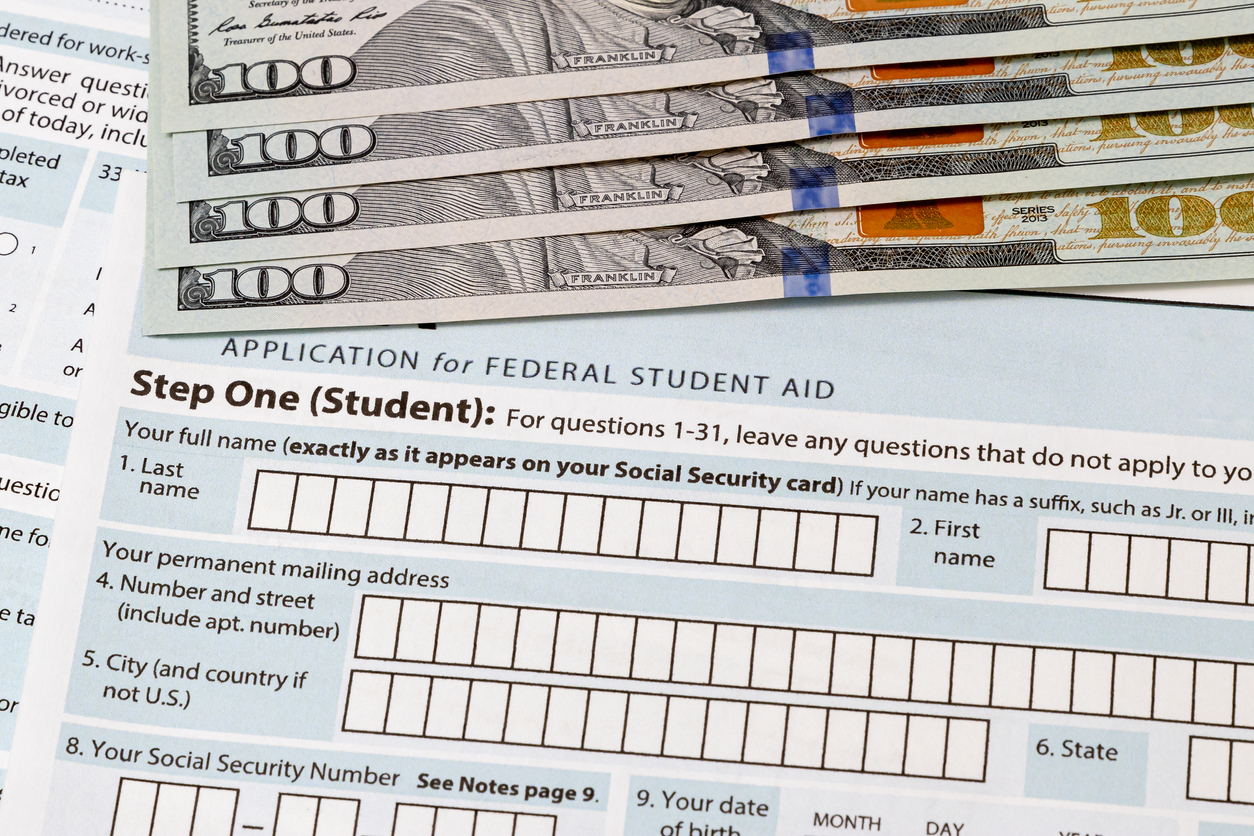Helping Your Teen With College Decisions: Loans, Savings, Moving Out

It seems like you were just choosing a color for the nursery and registering for baby shower gifts. But the days of diapers, sippy cups, and onesies are long gone. Now that your kiddo has gone from high chair-ready to high school grad, they’ll need help with college decisions—and more.
The acceptance letters are pouring in and your young adult child needs info on how to get a student loan, their college savings, and other types of financial aid. As they wade through repayment terms, interest rates, student loan payments, and of course, the actual college classes they could take, your soon-to-be high school grad/college student may feel plenty of perfectly normal confusion. And, this is where you come in.
Related: Making the Transition from Home to College
Does Your Child Really Need Your Help?

Your super-smart teen got into college based on their own abilities, grades, and test scores. Whether you guided them through the application process or they took control of this step, your child may still need mom or dad’s help making the final decision. With a list of schools and a stack of congratulatory letters, your child isn’t sure which college they should choose.
While you don’t want to push your own agenda or nudge your child too hard in one direction, it’s perfectly okay to step in and offer your opinions, assistance, or insights—especially when it comes to money matters, such as financial aid, a student loan, using college savings, or applying for a first credit card.
Even though your independent teen may not always ask for your help, or think they need it, you have an adult perspective and experience to back up any advice you give. Let your child know that you don’t want to make this decision for them—but you would like to offer an opinion, ask questions, help them to answer questions, and provide them with both general and financial information before they choose or enroll in one school.
Where Should You Start?
Money? Majors? The distance from their parents’ house? These questions are only a few of the issues that factor into your child’s college decision-making process. If you’re not sure where to start, imagine how your future high school grad feels. They’re not even a first-time college student yet, and your teen is already spinning under a mountain of financial aid eligibility paperwork.
Before you dig deep into the intricacies of student income-to-debt ratios and how to find the best financial institutions, take a step back and start at the basics. Unless your child’s college choices are all identical, they will need to consider:
- The distance. How far away from home does your child feel comfortable going? Some kids are ready to spread their wings and fly across the country, while others would rather have the option of a Sunday meal with mom or dad.
- The available majors. Does your child know what they want to major in? According to statistics from the U.S. Department of Education, thirty percent of undergrad college students change their major at least one time within three years of enrollment. Even if your kiddo is a million percent sure they want to major in bio, they could very well end up graduating with a BA in art history. This makes it important to choose a school with a solid variety of course/major options.
- The finances. Can your family afford the school? While tuition isn’t necessarily the deciding factor, you need to know that your family’s financial situation won’t interfere with the ability to pay.
Keep in mind that these categories and questions are only starting points. You may find it helpful to address each issue separately on different days. This gives your child time to think about their choices and organize their college comparisons. A visual representation, such as a list on a whiteboard or spreadsheet, can help your family to sort, compare, and contrast the schools.
Does Your Child Need a Student Loan or Other Financial Aid

Financial aid is a major sticking point for many families. College savings accounts may not always cover 100 percent of the entire tuition plus the cost of living for a four-year school, textbooks, a new laptop, dorm fees, food, and other related expenses.
The average annual tuition in the 2019-2020 school year for a four-year public institution was $9,400, according to the National Center for Education Statistics (NCES). This number jumps to $36,700 per year for private colleges.
These figures don’t even account for room and board. When you factor in the expenses associated with living on-campus, the NCES’s data shows the total cost of attendance for a four-year public college increases to $25,500 per year and $53,200 for a private nonprofit institution.
What happens if your child’s absolute top choice school is the most expensive pick on the list?
You don’t necessarily need to nix the $53,200+ university just because of its hefty price tag. If the school is the just-right distance away from home and has the majors your teen wants to explore different offers everything else they’re looking for in the college experience, it’s time to explore a student loan or other financial aid options.
What Are the Financial Aid Options for College Students?
Financing a college education won’t look the same for every student. Some families have sizable college savings accounts, while others may have little or nothing in the bank. If you weren’t prepared for the high cost of college and the added astronomical living expenses, you certainly aren’t alone.
The combined cost of tuition and living makes student loans and other financing options popular among families with college-aged children. Instead of doing the financial work solo, loop your kiddo in on the options and help them through this process. Start with the primary types of aid available. These include:
- Federal Direct Subsidized Loans - College students must demonstrate financial need to qualify for these loans. The U.S. Department of Education will pay the interest when the student is in school (at least half-time), during the six-month post-grad grace period, and during a deferment period.
- Federal Direct Unsubsidized Loans - These loans aren’t based on personal finance requirements. But the student must pay all of the interest.
- Work-study - Your child’s part-time job may help them to pay for the cost of college. The Federal Work-Study Program provides eligible college students with this non-loan option.
- Federal Pell Grants - Unlike a student loan, you don’t have to repay a grant. This financial aid option is only available to first-time undergrad students who don’t already have another degree and meet financial need eligibility requirements.
- Scholarships - These vary by school and area. Like grants, scholarships don’t require repayment. Some have financial need requirements, while others don’t.
Some young people consider using a credit card or personal loan to pay for college. While these lines of credit can pay for tuition, the cost of living, and more, they can also put your child in a bad place financially. A high-interest rate may make it almost impossible to repay a credit card. This can negatively impact your child’s post-grad credit score—making it hard for them to finance graduate school, rent an apartment, or even buy a house later in life.
How Can You Help Your Child to Get Financial Aid and Move Out?

Don’t wait until you get the first bill to figure out your teen’s financial aid situation. If you do have money in the bank, now is the time to dip into the college savings account and figure out whether you have enough to pay for tuition, room and board, and more. But if you know that loans, work-study programs, or grants are in your child’s future, get ready to fill out the Free Application for Federal Student Aid—also known as the FAFSA.
The FAFSA is available online from the U.S. Department of Education. This higher education aid application will require your child’s birth date/name/social security number, income tax info, bank account statements, any records of untaxed family income, and details on your child’s school choices.
After completing the FAFSA and submitting all required information, the U.S. Department of Education will process the application. Your child will get a Student Aid Report (or SAR) summary. This report will go to the colleges that your child lists on the FAFSA application. The schools will then determine how much and what types of aid your child qualifies for.
After you know how much of your savings and how much financial aid (loans, grants, work-study, and scholarship money) your child has, they’re ready to move out. At least, theoretically. With a solid financial plan in the works, you can help your teen to set up their own bank account and secure a first credit card for incidental or unexpected expenses. This can make both you and your child more comfortable with the next step and help your child to get their first taste of college-level independence.
Do you want to learn more about helping your teen to choose a college? Check out our guide on How to Help Your Teen Choose a College!

